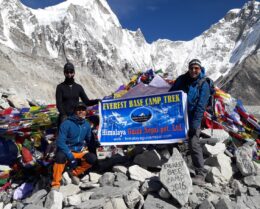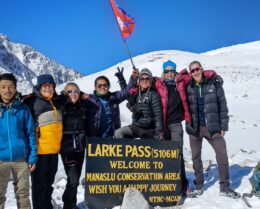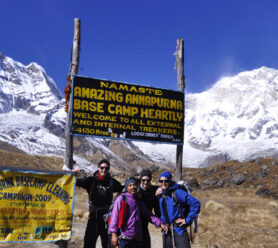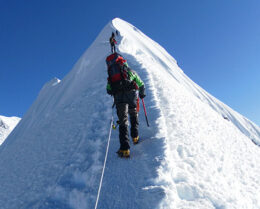Crossing Everest Three Pass Trek: Renjo La, Cho La, and Kongma La Passes
UPDATED ON 17 August, 2023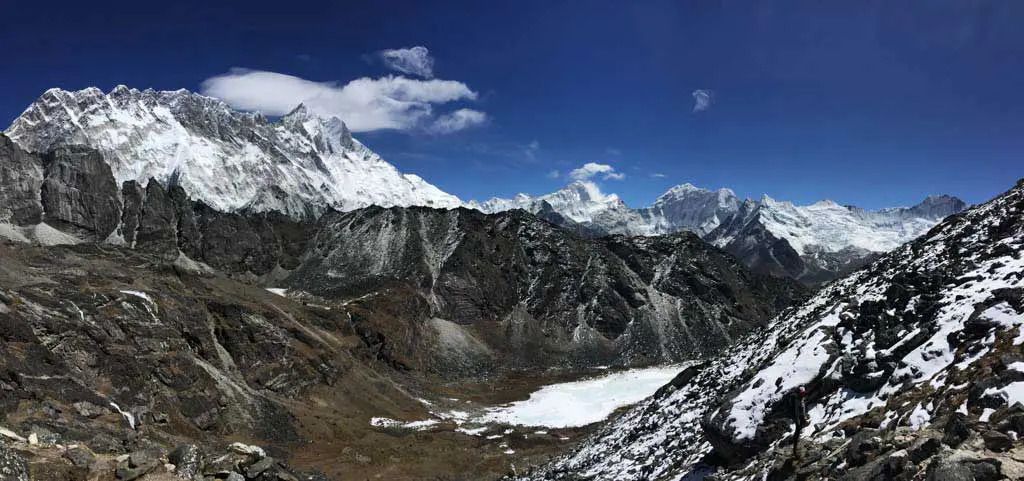
The Everest Three Pass Trek is a once-in-a-lifetime journey in the Himalayas. It allows adventurers to conquer three tough mountain passes – Renjo La, Cho La, and Kongma La. You can do this trek in the Everest area without a guide if you are prepared and have the right equipment. In this guide, we’ll explore the trek, including pass details and safety considerations.
Everest Three Passes Trek Without a Guide
Detailed Information about Renjo La, Cho La, and Kongma La Passes
The Everest Three Pass Trek is an exciting journey through different landscapes, from forests to snowy areas. Furthermore, Renjo La, with its altitude of 5,340 meters, is the first pass you’ll conquer. Additionally, Cho La (5,420 meters) comes next, and Kongma La (5,535 meters) is the final challenge.

Meanwhile, each pass presents its unique set of challenges and rewards, showcasing the Himalayan terrain’s astonishing variety. Consequently, the trek becomes not just a physical journey, but a mental and emotional exploration of nature’s grandeur.
Renjo La provides breathtaking views of Gokyo Lakes and Mount Everest. Cho La, on the other hand, leads you to Everest Base Camp and the picturesque Gokyo Valley. Kongma La offers panoramic views of towering peaks like Ama Dablam and Lhotse. The allure of these awe-inspiring landscapes drives trekkers to overcome the physical and mental hurdles along the way.
Difficulty Levels and Necessary Precautions
Undertaking the Everest Three Pass Trek is not for the faint-hearted. The altitude, extreme weather conditions, and strenuous ascents demand a high level of fitness and mental resilience.
Trekkers should prepare themselves for long hours of walking, often in challenging terrain. Furthermore, It’s advisable to have prior trekking experience and be aware of the signs of altitude sickness.
We add rest days to help your body adjust to less oxygen as you go higher up. Prior training and cardiovascular exercises can enhance your endurance and make the journey smoother.
Unforgettable Experiences and Panoramic Vistas
The Everest Three Pass Trek is not only about difficult terrains but also about experiencing the breathtaking beauty of the Himalayas. As you cross each pass, jaw-dropping landscapes reward you and imprint themselves on your memory.
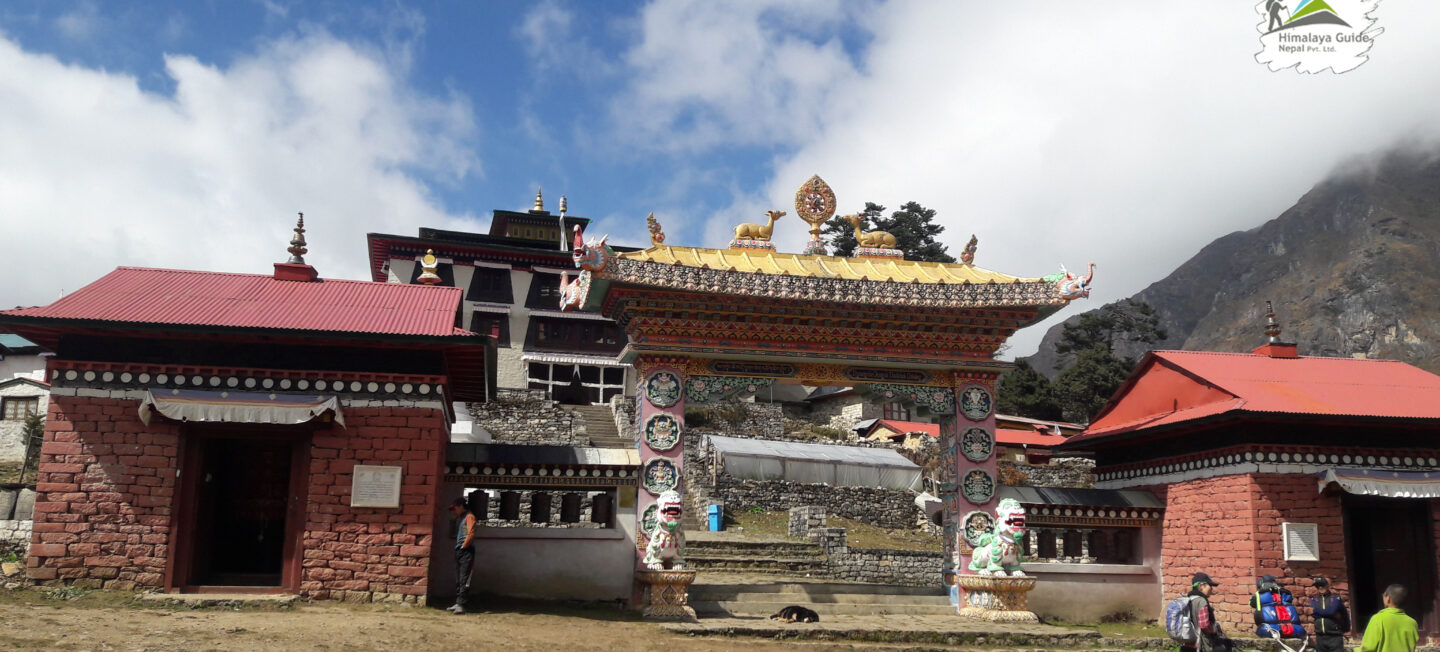
You’ll find peaceful Gokyo Lakes, the spiritual Tengboche Monastery, and the busy Namche Bazaar among the many cultural and natural marvels. Along the way, you’ll also get glimpses into the Sherpa way of life and the warm hospitality of the local people.
Three Pass Trek Distance
The Everest Three Pass Trek covers a considerable distance, taking you through a variety of landscapes and elevations. Furthermore, the total trek distance varies depending on the specific route you take and any side trips you choose to explore. Additionally, on average, the entire trek can cover around 100-130 kilometers (62-81 miles) over a span of about 19-21 days.
Although this distance might seem daunting, we have designed the itinerary to incorporate rest days for acclimatization and recovery. Moreover, These breaks are crucial for allowing your body to adjust to the changing altitudes, thereby reducing the risk of altitude sickness.
Everest Three-Pass Trek
The Everest Three Pass Trek is a challenging journey that tests your strength and resilience. It is also a beautiful journey that offers amazing views of nature. The journey begins and ends in Lukla, a small town with an airport that is the entrance to Everest.
As you explore Sagarmatha National Park, you’ll see different landscapes like forests, rocks, and valleys. Additionally, the journey takes you to renowned spots like Everest Base Camp, Kala Patthar, and the remote Gokyo Valley.
Each step reveals a different part of the stunning Himalayan scenery, creating a memorable journey filled with unique moments.
Three Pass Trek vs Everest Base Camp
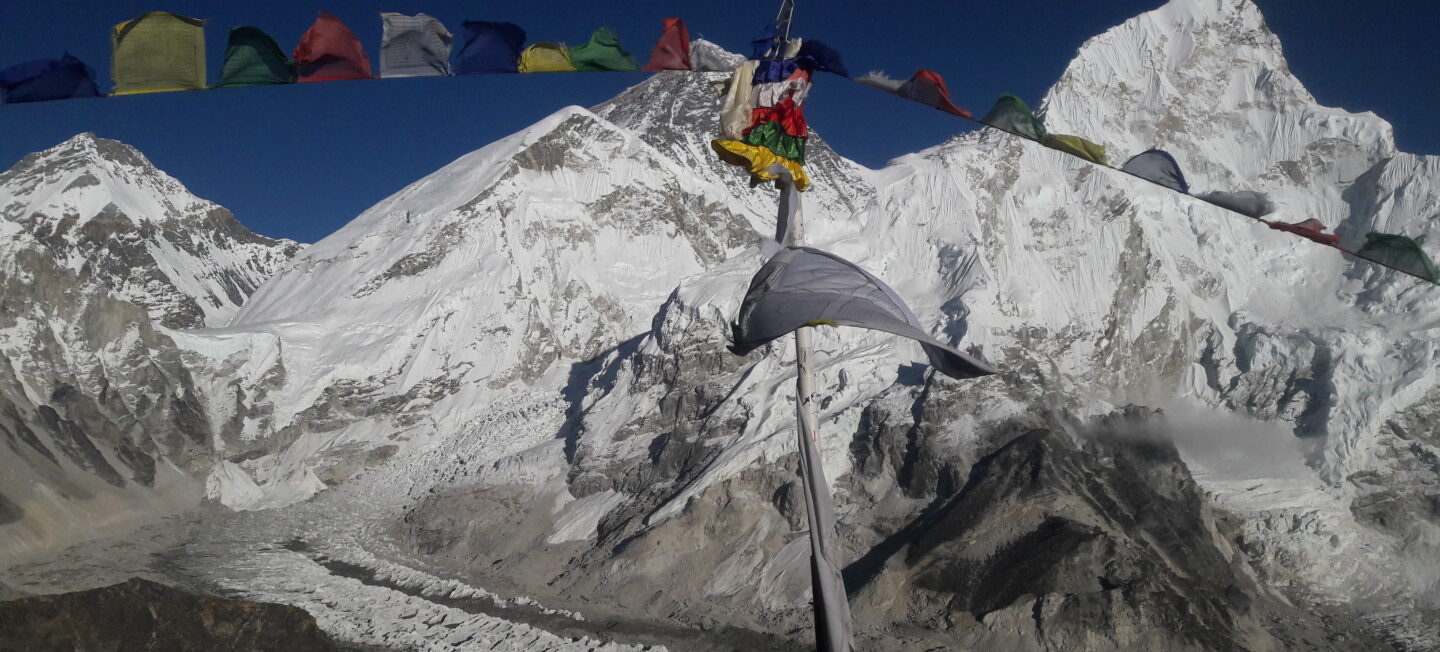
While both the Everest Three Pass Trek and the Everest Base Camp Trek offer captivating experiences, they cater to different levels of adventure enthusiasts.
The Everest Base Camp Trek is a popular choice, known for its accessibility and the chance to stand at the base of the world’s highest peak. Furthermore, the trail takes you through Sherpa villages and showcases the region’s cultural richness. Moreover, it’s an excellent option for trekkers seeking a taste of the Everest experience without the intense high-altitude challenges.
However, those who crave a more strenuous and immersive journey can opt for the Everest Three Pass Trek. It provides the opportunity to conquer multiple passes, venture into lesser-explored valleys, and witness panoramic views that are beyond imagination.
It’s a test of physical endurance and mental determination, best suited for trekkers with some prior high-altitude trekking experience.
Cost of the Three Passes Trek:
The expenses for the Three Passes Trek differ based on elements like the tour company, preferences for lodging, and supplementary offerings. Typically, the expenses can span from $1500 to $2500, encompassing permits, guides, lodging, meals, and conveyance.
Passes Trek Itinerary
- Day 0: Arrival at Tribhuvan International Airport, Nepal (1,300m): Welcome and transfer to the hotel
- Day 1: Kathmandu to Lukla, Phakding (2,640m) – 2-4 hours walk
- Day 2: Phakding to Namche Bazaar (3,440m) – 7-8 hours
- Day 3: Acclimatization Day in Namche (3,440m) – 2-3 hours
- Day 4: Namche Bazaar to Tengboche (3,860m) – 5-6 hours: Visit Tengboche Monastery
- Day 5: Tengboche to Dingboche (4,410m) – 5-6 hours
- Day 6: Acclimatization Day and Visit to Chhukum Valley (3-4 Hours)
- Day 7: Trek from Dingboche – Chukhung – Kongma La Pass (5,535m) – Lobuche (4,910m)-8-9 hours
- Day 8: Lobuche to Gorakshep(5,140m), EBC Hike – 5-6 hours: Visit Everest Base Camp(5,365m)
- Day 9: Hike to Kalapathar (5,555m), Back to Dzonglha (4,830m) – 5-6 hours walk: Hike to Kala Patthar for sunrise views
- Day 10: Dzonglha to Dragnag(Thangnak) via Chola Pass (5,420 m) – 7-8 hours walk
- Day 11: Dragnag to Gokyo (4,790m) – 3-4 hours walk: Trek to Gokyo
- Day 12: Gokyo Ri (5,357m) Visit, Overnight at Gokyo (3-4 Hours): Hike to Gokyo Ri Lake for panoramic views
- Day 13: Trek from Gokyo to Lumde via Renjo La Pass (5,345) – 8-9 hours
- Day 14: Lumde to Thame (3,800m) – 5-6 hours
- Day 15: Thame to Monjo (2,835m) – 5-6 hours
- Day 16: Monjo to Lukla (2,840m) – 4-5 hours
- Day 17: Lukla to Kathmandu by Flight (45 minutes)
Strategic Acclimatization Stops and Rest Days for a Successful Three Passes Trek
Acclimatization plays a vital role in the success and safety of the Three Passes Trek. Here are the recommended acclimatization stops and rest days strategically incorporated into the journey:
Namche Bazaar:

Upon reaching Namche Bazaar, take the time to acclimate to the increasing altitude. Nestled at 3440 meters, this vibrant town offers an ideal setting for your body to adjust before continuing further.
Dingboche:
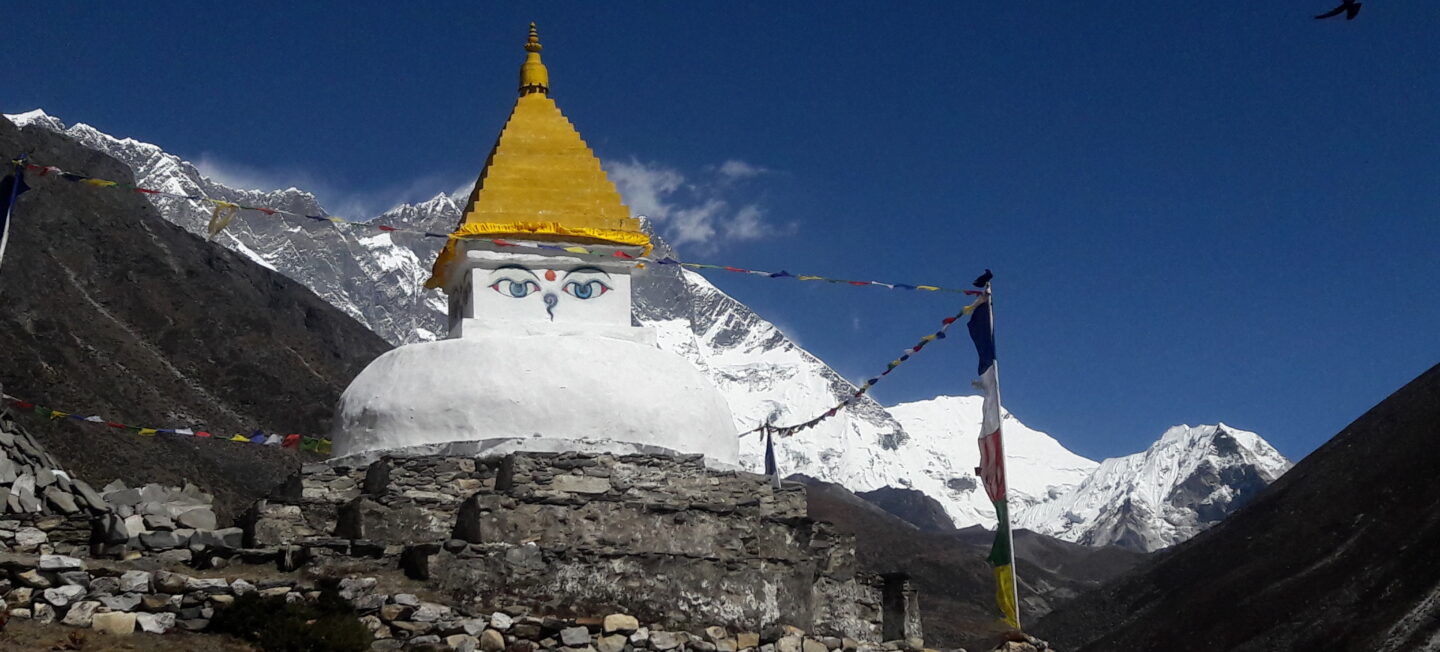
As you ascend higher, Dingboche serves as a crucial acclimatization stop. Here, you’ll give your body the chance to adapt to the elevated terrain. This ensures a safer progression to even greater heights.
Namche Bazaar (Again):
On your way to crossing Cho La Pass, revisit Namche Bazaar for a well-deserved rest. This strategic halt not only rejuvenates your energy but also aids in acclimatization before taking on the pass.
Gokyo:
Prior to crossing Renjo La Pass, spend time acclimatizing in Gokyo. The serene lakeside setting at 4790 meters allows your body to adjust and prepares you for the challenges that lie ahead.
This acclimatization stops and rest days are carefully chosen to help you adapt to the changing altitudes, mitigate altitude-related risks, and enhance your overall trekking experience.
Taking these breaks not only enhances your physical well-being but also allows you to absorb the breathtaking surroundings and immerse yourself in the beauty of the Himalayas.
Safety and Health Considerations
The mesmerizing beauty of the Everest Three Pass Trek comes hand in hand with potential health risks, primarily related to altitude. Furthermore, Adequate preparation and careful planning are essential to ensure your safety and well-being throughout the journey.
Altitude Sickness Prevention and Management
Altitude sickness, also known as acute mountain sickness (AMS), can be a serious concern as you ascend to higher altitudes. Furthermore, To prevent AMS, it’s crucial to acclimatize properly by gradually gaining altitude and taking acclimatization days. Stay hydrated, avoid alcohol, and eat a balanced diet rich in carbohydrates.
If you start experiencing symptoms of altitude sickness, such as headaches, nausea, or dizziness, it’s vital to descend to a lower altitude immediately. Many trekkers carry medication like Diamox as a precautionary measure. However, it’s advisable to consult a doctor before using any medication.
Hydration, Nutrition, and Rest During the Trek
Proper hydration is key to combating altitude-related challenges. Drink plenty of water and herbal teas throughout the trek to stay hydrated. Additionally, maintaining a balanced diet is crucial to sustaining your energy levels. Consume carbohydrates, proteins, and healthy fats to fuel your body for the demanding journey.
Adequate rest is equally important. Listen to your body and take breaks when needed. Getting sufficient sleep during the trek helps your body recover and adapt to the altitude.
First Aid and Emergency Procedures on the Trail
While you embark on the Everest Three Pass Trek, you must be prepared for unforeseen situations as it offers awe-inspiring landscapes. Carry a well-equipped first aid kit that includes basics like bandages, antiseptics, and any personal medications you might need.
In case of emergencies, there are local medical facilities in the villages along the trail. If a situation requires immediate attention, we can make arrangements for helicopter evacuation. However, prevention is always better than cure. So prioritize safety and adhere to the guidance of your trek leader or guide.
Accommodation and Meals During the Three Passes Trek
When it comes to accommodation and meals during the Three Passes Trek, trekkers can expect basic lodging options provided by teahouses along the trail. These teahouses offer a simple yet cozy place to rest, allowing you to recharge for the next day’s journey. As for meals, the trek introduces you to a variety of flavors through dishes like dal bhat, noodles, soups, and beverages.
Catering to diverse preferences, both vegetarian and non-vegetarian options are readily available. It’s important to note that the quality of meals and accommodation may vary in more remote areas of the trek. This adds a touch of adventure to your culinary and lodging experiences.
What to Expect on the Everest Three Pass Trek?
Embarking on the Everest Three Pass Trek is a journey into the heart of the Himalayas, promising a blend of breathtaking landscapes, cultural encounters, and personal challenges. Throughout this adventure, trekkers will encounter:
Majestic High Mountain Passes
The highlight of the trek is conquering the three high passes – Renjo La, Cho La, and Kongma La. Each pass presents its unique vistas and challenges, rewarding trekkers with panoramic views of snow-capped peaks, glacial valleys, and turquoise lakes.
Diverse Landscapes
The trail takes you through a captivating range of landscapes. You’ll traverse lush forests, cross crystal-clear rivers, navigate rocky terrains, and even tread on ancient glaciers. The diversity of the terrain keeps the trek engaging and ever-changing.
Iconic Everest Base Camp
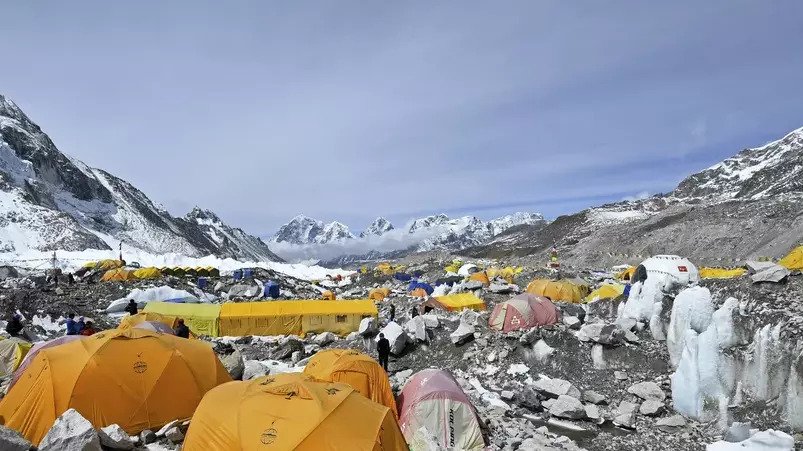
As part of the journey, trekkers get the chance to visit the legendary Everest Base Camp. Standing at the foot of the world’s tallest peak, Mount Everest is an awe-inspiring experience. It resonates with trekkers and mountaineers alike.
Gokyo Lakes
The trek also leads to the pristine Gokyo Valley, home to a series of stunning glacial lakes. Moreover, The vibrant hues of these lakes set against the backdrop of towering mountains create a surreal and magical atmosphere.
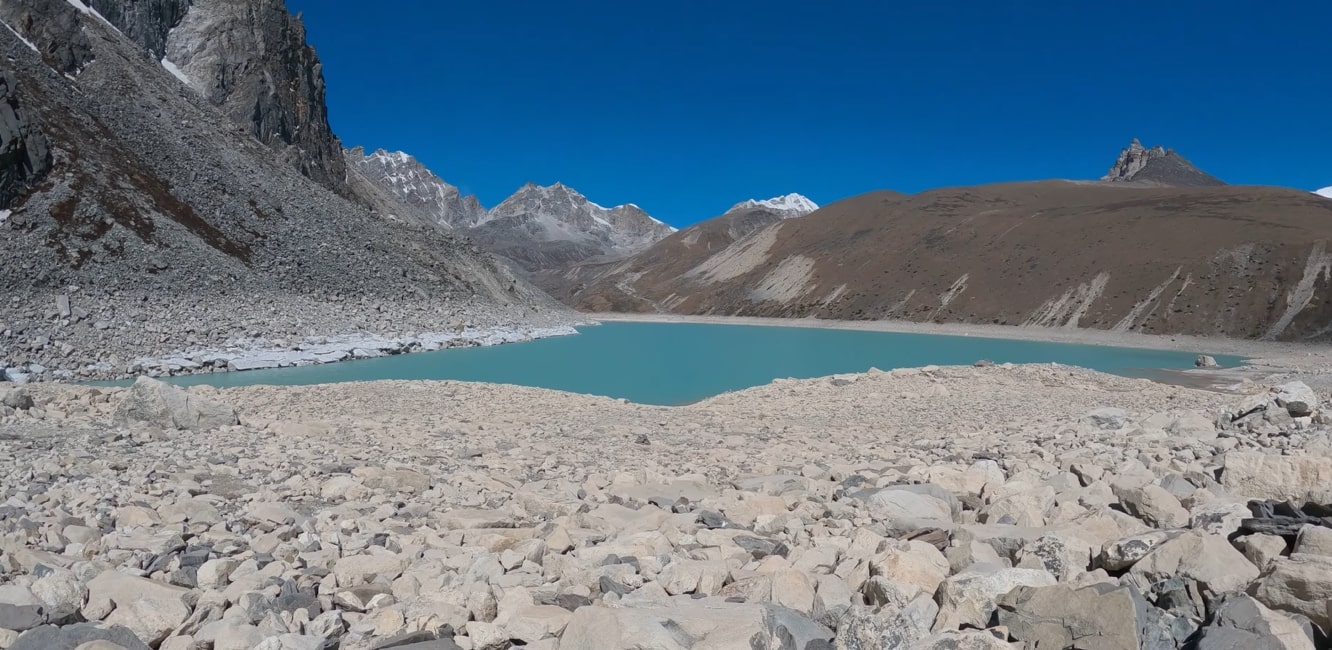
Sherpa Culture and Villages
Along the way, you’ll encounter Sherpa villages that offer a glimpse into the unique culture and way of life of these resilient mountain people. Additionally, You’ll have opportunities to interact with locals, visit monasteries, and immerse yourself in the rich cultural heritage of the region.
Challenging Altitudes
As you ascend to higher altitudes, you’ll face the physical and mental challenges that come with decreased oxygen levels. However, Altitude sickness is a real concern, making acclimatization days a crucial part of the trek to ensure your safety and comfort.
Unforgettable Sunrises and Sunsets
From vantage points like Kala Patthar, you’ll witness some of the most breathtaking sunrises and sunsets imaginable. The play of light on the surrounding peaks is a sight that will forever remain etched in your memory.
Pristine Natural Beauty
The Everest region is renowned for its untouched natural beauty. You’ll pass through remote valleys, cross high mountain passes draped in snow, and traverse landscapes that have remained largely unchanged for centuries.
Sense of Achievement
Successfully completing the Everest Three Pass Trek is not just a physical accomplishment, but a personal triumph. Overcoming the challenges of high altitudes, varied terrains, and demanding ascents instills a sense of pride and accomplishment that stays with you long after the trek is over.
Lasting Memories
The Everest Three Pass Trek is not just a trek; it’s an experience that creates lasting memories. The friendships forged, the moments of awe, and the sense of connection to nature and yourself make this journey truly unforgettable.
FAQs
Is prior trekking experience necessary for the Everest Three Pass Trek?
While not mandatory, prior trekking experience is recommended due to the challenging terrains and altitudes of the Everest Three Pass Trek. Moreover, Experience helps in navigating trails and adapting to conditions. Having prior trekking experience will help you navigate the trails more comfortably and adapt better to the changing conditions.
How long does it take to complete the Everest Three Pass Trek?
The Everest Three Pass Trek usually takes around 19-21 days, including acclimatization days to prevent altitude sickness. Additionally, this duration includes acclimatization days. These are essential for allowing your body to adjust to the increasing altitude and reducing the risk of altitude sickness.
What is the best time to undertake the Everest Three Pass Trek?
The ideal seasons for the trek are spring (March to May) and autumn (September to November) for stable weather and clear skies. However, These periods offer stable weather conditions, clear skies, and moderate temperatures, making the trekking experience more enjoyable.
Can I do the Everest Three Pass Trek without a guide?
Yes, it’s possible, but being well-prepared and experienced is essential. Hiring a guide is safer if navigation skills are a concern. If you’re not confident in your navigation skills, hiring a guide is a safer option. They can provide valuable insights and assistance.
How can I prevent altitude sickness during the Everest Three Pass Trek?
Prevent altitude sickness by gradual ascent, staying hydrated, eating a balanced diet, following acclimatization days, and considering medication like Diamox after consulting a doctor.
Conclusion
In conclusion, The Everest Three Pass Trek is a remarkable expedition that takes you through some of the most awe-inspiring landscapes on the planet. Conquering the three high mountain passes is a testament to your physical endurance and mental strength. Also, the panoramic vistas you’ll witness along the way will be etched in your memory forever.
Whether you’re a seasoned trekker seeking an ultimate challenge or someone who dreams of standing amidst the towering Himalayan peaks, this trek offers an experience like no other. Remember, while the journey might be demanding, the rewards far surpass the difficulties.
Similarly, prepare well, respect the mountains, and embark on this journey of a lifetime. The Himalayas are waiting to share their grandeur with you on the Everest Three Pass Trek.
You may also Like:

